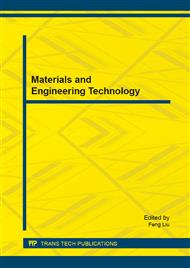p.1043
p.1049
p.1056
p.1063
p.1068
p.1074
p.1082
p.1089
p.1093
An Improved Frequency-Shift Compression Method Based on Auto Energy Gain Compensation for Digital Hearing Aids
Abstract:
Sensorineural hearing impaired individuals have narrow hearing range, especially in high frequency. Due to acoustic diffusion masking, just amplifying speech can’t meet patients’ demands. Traditional methods restore the signal of high frequency in low frequency, which has two weaknesses. On the one hand high frequency covers low frequency, on the other hand the methods change the energy of speech. These two aspects severely decrease speech loudness, perception and recognition. To solve the above problems, we have proposed an improved frequency shifting compression method based on Auto Energy Gain Compensation (AEGC) which is used for hearing aids. Fully investigating the relationship of speech frequency with energy and recognition, the scheme selectively keeps the information of vital frequency band. Meanwhile, it compensates the speech loudness with AEGC module. With the proposed scheme, it has obviously improved the speech perception and recognition. Both the theoretical simulation result and subjective test in APP on android platform show the energy is compensated and the speech recognition ratios are enhanced 20%-30% in different environments, especially efficient in quiet, noisy and normal environment.
Info:
Periodical:
Pages:
1068-1073
Citation:
Online since:
January 2015
Authors:
Price:
Сopyright:
© 2015 Trans Tech Publications Ltd. All Rights Reserved
Share:
Citation:


